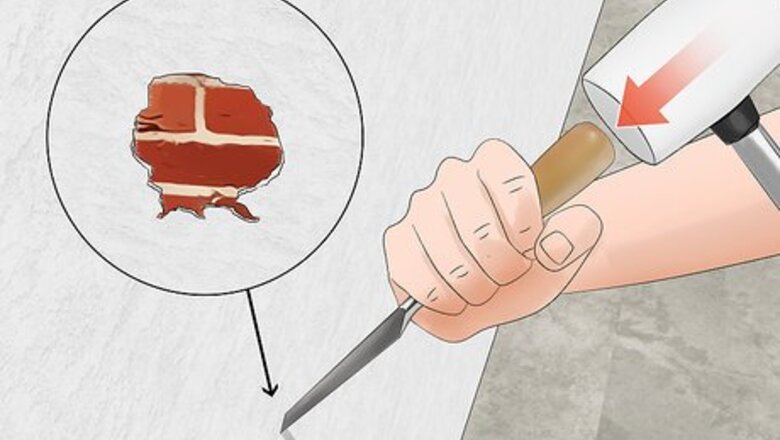
views
Protecting Yourself and Your Home
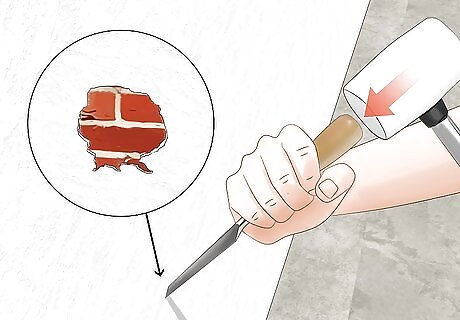
Inspect the condition of the brick you want to expose before you begin. Use the tip of a chisel or knife to chip away a small piece of the plaster in an out-of-the-way area of the wall. If the brick below is intact and still has its original color, you can proceed with confidence. If it crumbles or breaks underneath your touch or looks cracked or porous, it’s probably best to leave it alone. Attempting to expose deteriorated brick will only damage it further. If you’re not careful, you could end up ruining the appearance of the brick or even compromising the stability of the wall. It’s necessary to expose a portion of the brick in order to see if it’s worth uncovering the rest. Brick doesn’t always age gracefully, even when it’s sealed away beneath another finishing material.
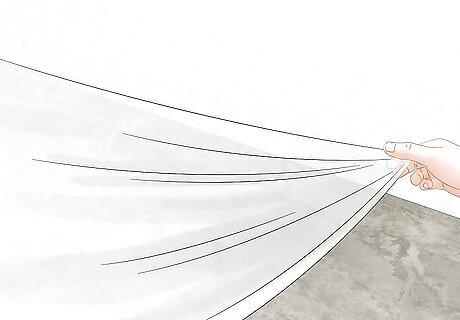
Cover the floor below the wall with plastic sheeting. To prepare for restoration, start by removing any nearby furniture, fixtures, or personal belongings from the area you’ll be working in. Then, spread out one or more sheets of plastic over the floor, covering as much territory as you can. Use painter’s tape to secure the edges of the plastic to the floor at the base of the wall. Taking a chisel to a plaster wall can generate a considerable amount of dust and debris. By taking a few moments to put down a protective buffer, you stand to save yourself a lot of time and energy that you might otherwise spend deep-cleaning later on. It may also be a good idea to seal off air vents and doorways close to your work area to limit the amount of dust that makes its way into other parts of your home.Tip: Keep your windows uncovered and open wide to provide some much-needed ventilation. If you like, you can even place a box fan on the window sill to suck out excess dust lingering in the air.
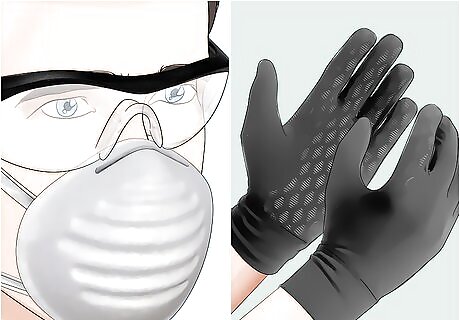
Equip yourself with a respirator, goggles, and a pair of work gloves. It’s important that you use a respirator that actually filters the air to avoid breathing in lungfuls of drifting dust. An ordinary facemask won’t cut it for this project. And since this project is likely to take many hours, you’ll want to pull on some thick, durable gloves to keep your hands comfortable while you go to work on the plaster. Plan on wearing a change of old clothes that you don’t mind ruining. You may never get all the dust out of them once you’re done.
Removing Plaster Safely and Efficiently
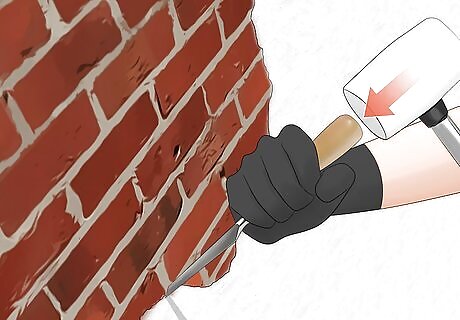
Use a hammer and masonry chisel to break up the bulk of the plaster. Start at the spot you tested earlier and position the tip of the chisel against the wall at a downward angle. Hit the back end with your hammer to drive the blade into the plaster and separate it from the brick. Continue chiseling one patch at a time, working your way inward from the edges. Alternatively, you can take care of the demolition phase with only a crowbar if you don’t have a suitable masonry chisel. Use the rounded end for smashing and the pointed end for prying. There’s no need to be delicate here, but don’t get carried away, either. The idea is to use enough force to loosen the plaster without damaging the underlying brick.Tip: Exposing brick is slow, difficult work, no matter what tools you use. Be patient and try to pace yourself as best you can. It may be better to tackle this kind of project over the course of a weekend rather than attempting to get it done all at once.

Pry off clinging sections using a crowbar or putty knife. If you’re lucky, you’ll send large chunks of plaster raining down with each strike of your chisel. If not, you’ll need to give it a little encouragement. Wedge the tip of your crowbar or putty knife beneath the outer edge of stubborn sections and pull back forcefully to coax them free of the wall. You’re more likely to remove the plaster in broad sheets using slow, controlled strokes than you are using quick, choppy ones. Keep a few large plastic tubs or buckets on standby to catch the plaster as it comes off of the wall.
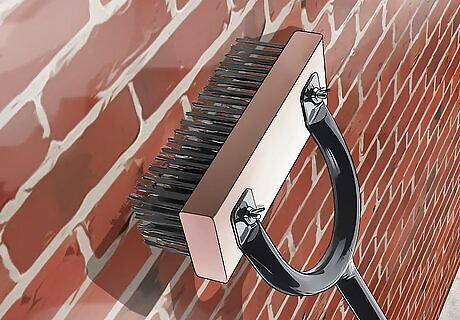
Go over the freshly-exposed wall with a wire brush. Once you’ve successfully removed plaster, give the entire surface a thorough scouring, applying moderate pressure with your brush. This will loosen any remaining debris that's too small to get at with your crowbar or putty knife. Work from top to bottom to avoid spreading more dust to sections you just brushed. If you notice your wire brush leaving scratches in the brick, one solution is to buff them out using a power drill fitted with a wire brush bit. Unlike the handheld brush, the rotary bit spins a circular direction, erasing conspicuous lines and scratches.
Cleaning and Sealing the Brick

Apply a mild soap solution to the wall and let it sit for 10 minutes. Combine equal parts water, liquid dish soap, and salt in a spacious container and stir them together until they form a thin paste. Use a clean cloth or sponge to spread this paste onto every exposed part of the wall in sections. Then, allow it to soak into the brick for at least 10 minutes. The exact quantity you mix up will depend on the size of the wall you’re cleaning. It may be necessary to prepare multiple batches of the solution if you’re cleaning an entire wall. As the solution sits on the brick, the salt will gradually wear down the tiny particles of plaster left behind while the detergent in the dish soap lifts away set-in dirt and oil. This solution is also perfect for regular cleanings once you've got your brick fully exposed and sealed. You can also buy a specific brick cleaning solution. These products are usually sold at local brick suppliers.
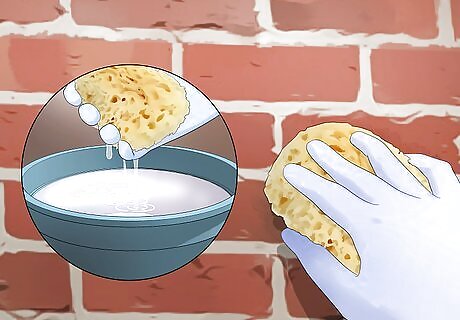
Wipe the entire wall with a wet cloth or sponge. Dunk your cloth or sponge in a container of clean, warm water and use it to wash away the soap solution, along with any dust and debris it’s collected. Move your cloth or sponge along in smooth back-and-forth or circular motions, starting with the upper section of the wall. Continue rinsing until the brick is completely free of soapy residue. Wring out your cloth or sponge frequently, and change out the water in your container as soon as it becomes so murky that you can no longer see the bottom. Other options for cleaning exposed brick include sandblasting and applications of muriatic acid. Keep in mind, however, that these methods are far less gentle than a homemade soap solution, and are therefore more likely to damage brick that’s become brittle with age.
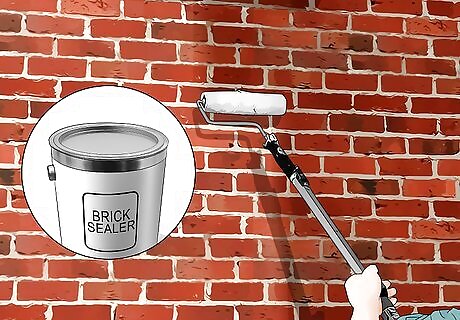
Roll or brush on 1-2 coats of brick sealant to protect the exposed brick. Apply the sealant the way you would ordinary paint, aiming for full, even coverage. Allow your first coat to dry for 2-3 hours, or until it’s no longer tacky to the touch. Then, throw on a follow-up coat. Let this final coat cure for at least 1 week prior to decorating, painting, or otherwise interfering with the exposed brick. Choose a 100% acrylic sealant that’s resistant to dirt, water, and scratches. Make sure the sealant you get offers a matte finish—you don’t want to accidentally coat your brick in a high-luster gloss! A good brick sealant will safeguard your brick from deterioration as a result of exposure to air and moisture. This is especially important if the brick is more than a few years old.Tip: A soft-bristled paintbrush or a roller with a minimum ⁄4–1 ⁄4 in (1.9–3.2 cm) nap will make it easier to work the sealant into the cracks, crevices, and pores in the rough brick.
















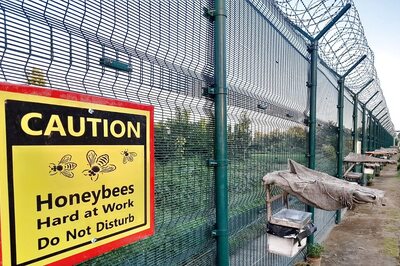
Comments
0 comment